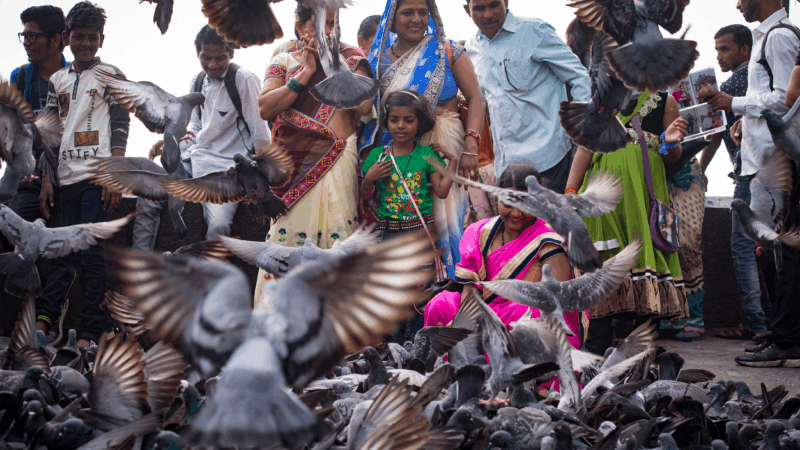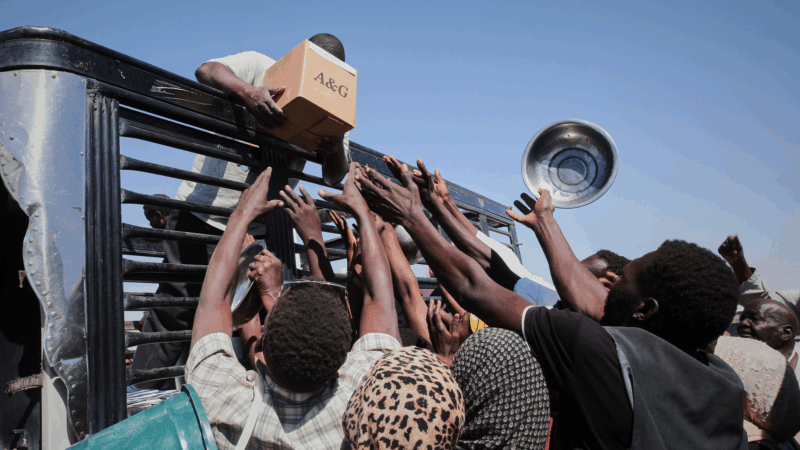In photographs, scientists revel in the world they seek to discover
It was November 2020 in the Norwegian Arctic during the season of polar night when the sun never peeks above the horizon. “It’s kind of just this long extended dusk,” explains University of Tromsø spatial ecologist Emma Vogel. “I think it’s one of the most beautiful times. It’ll be like a sunset but for hours. Quite unreal.”
Vogel studies how whales move, behave and interact with fisheries to help inform conservation and coastal community management.
And she’s now won Nature Magazine‘s Scientist at Work photography contest for a photo she took on a particular morning. Like most other days, she was in a small boat with her then supervisor Audun Rikardsen, motoring into the fjord.
As they approached the fishing boats, “sometimes you’ll start to hear the whales before you can see them,” says Vogel. This includes killer whales, humpbacks and fin whales. “If you’re downwind, you definitely smell their fish breath — not the best.”
During a moment of relative calm between tagging the whales, Vogel took her camera, which she typically uses for routine whale documentation, and captured the riveting scene aboard her little boat.
“In the center of the photo, you see Audun Rikardsen, and he’s in this bright yellow survival suit, sitting with his headlamp on, just looking into the distance,” she says. Atop his head is “his signature kind of hat [that] makes him look almost like an old airline pilot.”
Behind him is a large fishing boat — its two bright lights illuminating the crew on deck. There are hundreds of seagulls wheeling about, anticipating the imminent haul of fish.
“The background is really nice because there’s really beautiful snow-covered mountains,” Vogel observes. And in the distance, between the boat and the mountains, there’s a killer whale surfacing, swimming toward the fishing boat. “I had no clue the whale was in that shot,” says Vogel. “It gives me a feeling of a dreamlike state.”
Rikardsen, who’s also won international contests for his photography and is a marine scientist at the Arctic University of Tromsø, is delighted that Vogel won. “I hope I might also have motivated her a little in relating to photography,” he says. “She has an eye for the situations and is a good photographer and I am proud that she got this well deserved award.”
Croakers, clouds and the cosmos

The other winning entries were just as striking.
In one, Kate Belleville, an environmental scientist with the California Department of Fish and Wildlife, kneels in a forest, grinning at eight tiny frogs in her hands. “This image is special because it documents scientists using medicine to help populations of wildlife affected by infectious disease,” explains Ryan Wagner, the photographer and a conservation biology graduate student at Washington State University Vancouver.
The little frogs had just been placed in an antifungal solution intended to eliminate the chytrid fungus, a deadly killer of amphibian species globally. Such a remedy might help with “stabilizing and even reversing population declines.” says Wagner. “This image captures a hopeful moment for the conservation of amphibians.”

In another photo, Michael Lonardi, an atmospheric scientist at the École Polytechnique Fédérale de Lausanne, crouches on top of a foggy Greek mountain, a weather balloon overhead as he measures the cloud forming around him. Finding a spare moment to take photographs is difficult in the middle of an intense field season, says Lionel Favre, the photographer and a field assistant at the same institution. But he couldn’t resist. “The mood with the fog was really dramatic and when Michael opened up the laptop his face just [lit] up,” he says. “I grab my camera and took a shot of this magical moment.”
Favre says nature is the most realistic laboratory that he and his colleagues have to collect the data they need to understand cloud creation and the role that tiny aerosol particles play. “We become part of the experiment ourselves as we somehow get to see the atmospheric processes unveiling in front of us, observing a cloud forming where there was blue sky until some minutes ago,” he explains. “Sometimes it can be exhausting, facing cold temperatures and long working days to collect what may seem just a bunch of numbers, but this is also the challenge that moves us while trying to understand our planet.”

And then there’s the photograph that Jiayi Wang, a geology Ph.D. student at the China University of Geosciences, took last October. Wang and his colleagues were in Siberia to study gold deposits and why they formed there during the Cretaceous.
“In order to keep warm, we have to make fire,” he recalls. “And that’s when I just go outside to see the sky. And I find, ‘Wow, what a beautiful night,’ and I just capture this image.”
Wang’s photo is mostly the night sky, dripping with stars. The landscape is a silhouette at the bottom with the cabin in the middle. It casts the light of the fire upon a single human form in the doorway — one person, alone in the cosmos.
“I have met so many geologists — they have to go for fieldwork maybe 10 months a year,” says Wang. “They spend little time with their families.”
Wang’s parents discouraged him from studying geology for exactly this reason. “But I still insist [on] that kind of major because I love science,” he says.
It’s a love that, so far, has provided him with good friendships — and stunning new places to photograph.
Light from satellites will ruin majority of some space telescope images, study says
Astronomers have long been concerned about reflections from satellites showing up in images taken by telescopes and other scientific instruments.
Defense Department is reviewing boat strike video for possible release, Hegseth says
In a speech on Saturday, Defense Secretary Pete Hegseth defended the strikes, saying: "President Trump can and will take decisive military action as he sees fit to defend our nation's interests."
Bama, Miami in, Notre Dame out and Indiana No. 1 in College Football Playoff rankings
Nobody paying attention for the past 24 months would be surprised to see Indiana – yes, Indiana – leading the way into this year's College Football Playoff.
McLaren’s Lando Norris wins first F1 title at season-ending Abu Dhabi Grand Prix
Red Bull driver and defending champion Max Verstappen won the race with Norris placing third, which allowed Norris to finish two points ahead of Verstappen in the season-long standings.
A ban on feeding pigeons ruffles lots of feathers in Mumbai
The pigeon population has exploded — a result of people feeding the birds. For some it's a holy duty and a way to connect to nature. Critics point to health risks tied to exposure to pigeon droppings.
UN humanitarian chief: world needs to ‘wake up’ and help stop violence in Sudan
The UN's top humanitarian and emergency relief official has told NPR that the lack of attention from world leaders to the war in Sudan is the "billion dollar question".








